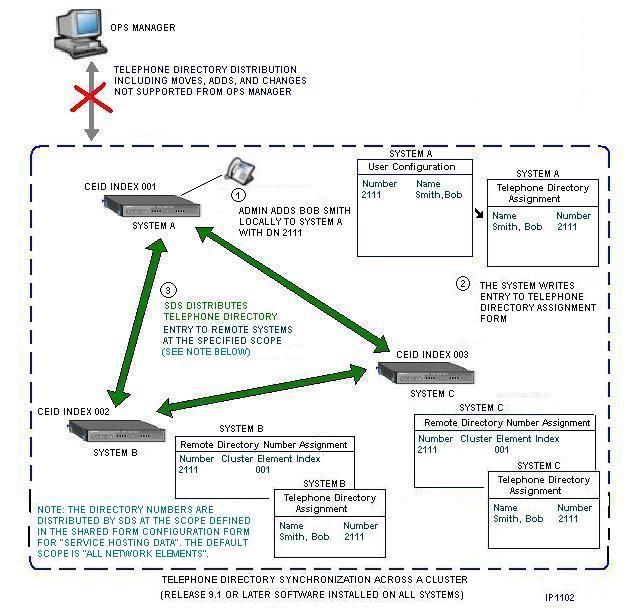
Remote Directory Number Synchronization mode uses SDS to distribute the telephone directory entries to all the element databases in a network or cluster. If a network or cluster uses Remote Directory Number (RDN) Synchronization mode, any telephone directory entries that you add, modify, or delete at an element though the System Administration Tool are automatically distributed to the other elements. The updates are distributed to the other elements in the network or cluster via System Data Synchronization (SDS). In this mode, you can also configure device resiliency from the System Administration Tool (see Embedded Resilient Device Support for details).
The following graphic illustrates how the telephone directories are synchronized across a cluster using RDN Synchronization.

The following table identifies the forms that are updated
with a new telephone directory entry. Both Element A and Element B support
RDN Synchronization, are sharing data, and the Telephone Directory Assignment
form is being shared at the "All 3000 ICP" scope. If you add
a new entry through the User Configuration form on Element A, the entry
is written into the databases of both Element A and Element B and recorded
in the following forms:
|
Forms on Element A |
DN listed in form |
Forms on Element B |
DN listed in form |
|
User Configuration |
Yes (local number) |
User Configuration |
No (remote number) |
|
Telephone Directory (shared at "All 3300 ICP" scope) |
Yes |
Telephone Directory |
Yes |
|
Remote Directory Number Assignment |
No (local number) |
Remote Directory Number Assignment |
Yes (remote number) |
To determine if your system is using Remote Directory Number Synchronization:
Navigate to the Shared Forms Configuration form
Check the top left-hand corner of the form:
If Using Common Data is displayed, Remote Directory Number Synchronization is enabled.
If a Migrate to Common Data Distribution button is present, Remote Directory Number Synchronization is not enabled.
